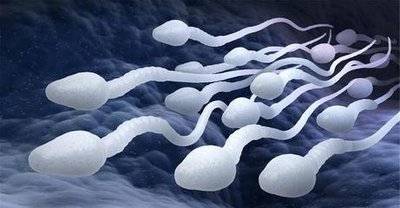With the improvement of living standards, the likelihood of male infertility is increasing year by year. The most significant factor causing male infertility is abnormal sperm quality. Changes in sperm count, sperm motility, sperm survival rate, and sperm morphology can easily reduce male fertility. Early treatment is necessary when sperm abnormalities occur to help improve the fertility of male patients.
So, what are the sperm abnormalities that affect male fertility?
1. Oligospermia
Oligospermia, as the name suggests, refers to sperm with low activity. When semen is left to stand at the proper temperature for an hour after ejaculation, less than 50% of the sperm show vigorous motility. Oligospermia can exist on its own or coexist with other sperm abnormalities, making it a major cause of male infertility. It requires prompt attention and treatment to enhance sperm activity.
2. Asthenozoospermia
Asthenozoospermia refers to sperm with a density lower than 20 million per milliliter or a total sperm count of less than 40 million per ejaculation in men, which also contributes to male infertility. Normally, sperm density and quantity are directly proportional to male fertility and sperm motility. A decrease in sperm density leads to reduced sperm motility, impacting male fertility. When treating asthenozoospermia clinically, it is essential to identify the cause and enhance sperm activity.
3. Azoospermia
Azoospermia is a severe condition that decreases male fertility. It specifically refers to the inability of men to produce semen even after abstaining for 3-7 days and using external ejaculation methods. It poses challenges in treatment with less than ideal outcomes. True azoospermia results from testicular spermatogenic dysfunction or congenital testicular malformation, while obstructive azoospermia is caused by ductal blockages.
4. Necrozoospermia
Necrozoospermia entails a significant decrease in sperm viability. It may coexist with oligospermia or occur independently, with its clinical incidence increasing annually. Factors contributing to the rising incidence of necrozoospermia include changes in lifestyle, increased radiation, environmental pollution, as well as unhealthy habits and dietary choices. Treating necrozoospermia not only involves enhancing sperm viability but also necessitates lifestyle and dietary modifications. More and more cases of male infertility in clinical settings are attributed to necrozoospermia.
5. Teratozoospermia
Teratozoospermia is relatively rare in clinical practice and refers to variations in the shape of sperm heads, bodies, or tails. Primary causes of sperm deformities include high temperatures, exposure to heavy metals, and varicocele. Early treatment is required when routine semen analysis reveals sperm abnormalities or deformities, to determine the underlying causes through physical examinations, imaging studies, hormone level assessments, and various chromosomal investigations. This facilitates timely and standardized treatment to enhance male fertility.
Kunming Jiuzhou Hospital kindly reminds that sperm quality is a crucial factor in male fetal reproduction. If abnormalities in sperm quality are detected, it is essential to promptly seek examination and treatment at a specialized and reputable hospital to address the issues. Many male patients should not hesitate to seek medical help when faced with problems, as active cooperation with doctors in examinations and treatment can shorten the treatment duration, aiding in promoting male fertility.


